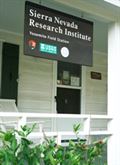
 MERCED, CA — The University of California Board of Regents approved today (Nov. 19) a request to include the University of California, Merced’s Yosemite Field Station as part of the UC Natural Reserve System (NRS).
MERCED, CA — The University of California Board of Regents approved today (Nov. 19) a request to include the University of California, Merced’s Yosemite Field Station as part of the UC Natural Reserve System (NRS).
The station, which is part of UC Merced’s Sierra Nevada Research Institute (SNRI), is located inside Yosemite National Park in the historic village of Wawona. The designation gives UC Merced its first natural reserve site.
“The addition of the Yosemite Field Station to the UC Natural Reserve signifies our strong commitment as a campus, and as part of the UC system, to develop a sustainable presence in the central Sierra Nevada,” said Roger Bales, director of the Sierra Nevada Research Institute. “Being a part of the NRS will strengthen UC research to this critically important region.”
Opened in 2006, the Yosemite Field Station provides research access to multiple habitats in the central and southern Sierra. The facility includes classroom, office and work space, and overnight accommodations for as many as 30 people. Throughout the year, the station hosts research scientists and students from high school to graduate level, with the near-capacity summer users representing a vibrant community of researchers and undergraduate assistants.
As part of the NRS, the Yosemite Field Station joins 36 reserves that encompass approximately 135,000 acres of protected natural land available for university-level instruction, research and public outreach.
The NRS was established nearly 45 years ago to assemble a system of protected sites that would broadly represent California’s rich ecological diversity for scientific study. Students, teachers and qualified researchers from any public or private institution throughout the world are able to access the NRS.
The Yosemite Field Station’s inclusion in the NRS is especially timely given the impact climate change is having on the Sierra Nevada.
“This designation opens up opportunities to facilitate better research and partnerships that will help California learn to manage some of its most precious resources in the Sierra — its water and forests,” Bales said.
The station is one of several research facilities operated by SNRI. SNRI’s primary mission is to discover and share new knowledge that contributes to sustaining natural resources in California’s Sierra Nevada and Central Valley regions. SNRI accomplishes this by fostering interdisciplinary research and facilitating synergistic links between science education, natural resource management and the arts.






